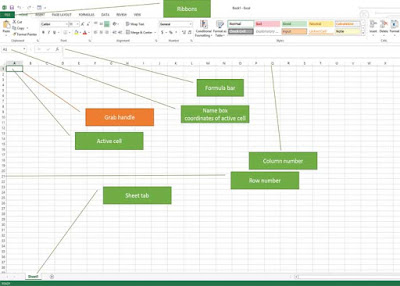Microsoft Excel 2013 is one of the most popular software applications worldwide and is part of the Microsoft Office 2013 productivity suite. You can use Excel to analyze data, for example, in accounts, budgets, billing and many other areas. You learn how to navigate this revised version of Excel, exploring the menu bar and the different tasks that can be done with it. You will work on sample spreadsheets doing basic math, adding and deleting columns and rows, and preparing the worksheet for printing. You will learn how to represent your data visually to show trends, patterns and comparisons between the data in a chart, table or other template, and how Excel 2013 will automatically do all the calculations for you once you add in the formula. This course will be of great interest to all professionals in business, finance and many other areas that need to analyze data in accounts, or keep records of stock or schedules, and to anyone trying to keep track of their personal finances at home.
Microsoft Excel is a spreadsheet developed by Microsoft for Windows, Mac OS X, and iOS. It features calculation, graphing tools, pivot tables, and a macro programming language called Visual Basic for Applications. It has been a very widely applied spreadsheet for these platforms, especially since version 5 in 1993, and it has replaced Lotus 1-2-3 as the industry standard for spreadsheets. Excel forms part of Microsoft Office.
- Using advanced graphs and presentation techniques to maximize impact
- How macros and VBA automate your spreadsheets and increase interactivity
- How superpower functions can solve complex problems
- Using Pivot Tables and Power Pivot to turn raw data into clear information that supports key decisions
Excel Basics
• Getting Started with Excel
• Modifying Columns, Rows, and Cells
• Saving Worksheet Basics
• Cell Basics
• Formatting Cells
• Creating Simple Formulas
• Printing
Common Task in Excel
• Creating Complex Formulas
• Sorting Data
• Filtering Data
• Working with Basic Functions
• Outlining Data
• Formatting Tables
Doing More with Excel
• Reviewing and Sharing Workbooks
• Working with Charts
• Using Conditional Formatting
• Using What-If Analysis
• Using Templates
• Working with Spark lines
• Creating Pivot Tables
• Merging Copies of a Shared Workbook
• What are Reference Styles?
For more details visit us @ Excel Training

Thank you for some other informative website. The place else may just I get that kind of information written in such a perfect method? I have a venture that I am simply now running on, and I’ve been at the glance out for such info.
ReplyDeleteexcel courses
Great blog. All posts have something to learn. Your work is very good and I appreciate you and hopping for some more informative posts. Ms excel coaching near me
ReplyDelete